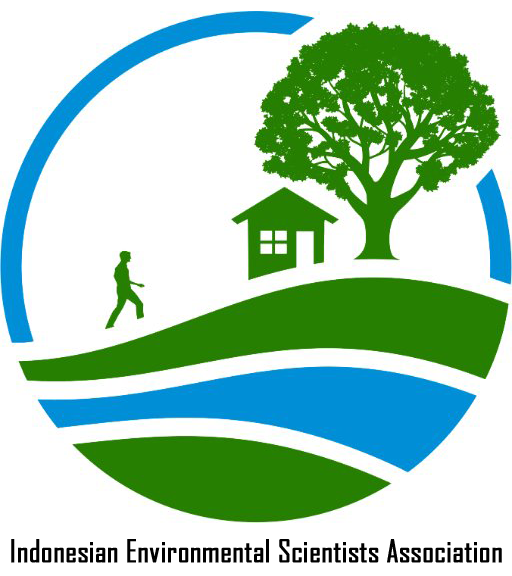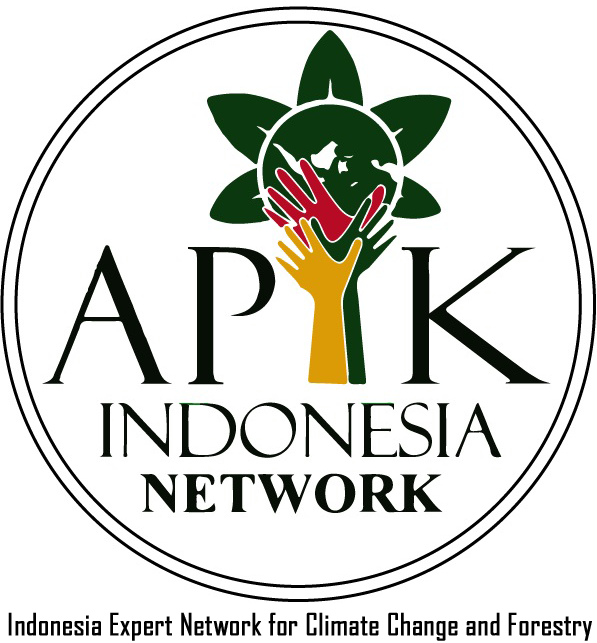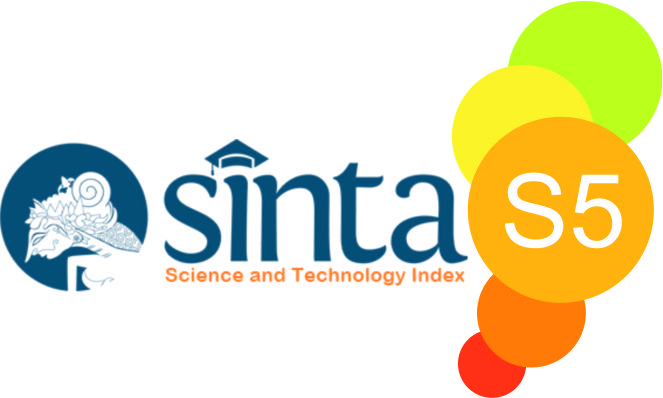WASTEWATER SLUDGE AS AN ALTERNATIVE ENERGY RESOURCE: A REVIEW
Abstract
In recent years, concerns regarding to wastewater sludge disposal have increased globally. Production of sludge has increased recently due to the growth of population. Wastewater sludge classified as a hazardous substance, it is not easy to dispose because of certain treatment is required. Typically, sludge is treated at secured landfill which its limited in availability and expensive. On the other hand, wastewater sludge originated from biological treatment contains organic substance that can be converted into alternative energy resources. A technology is needed that is able to reduce the volume of sludge and convert sludge into energy source. We present an overview of various technologies that can be used for conversion of sludge into energy resources. Those technologies are anaerobic digestion, pelletization, combustion, pyrolysis and gasification. Progress and challenges of each technology is presented in detail. A summary of sludge characteristic originated from different source will be discussed as well. Emissions and residues that determines the environmental impact is also considered. Referring to some previous research, it known that wastewater sludge, as unwanted product, has the potential to become future energy resource. This potential can only be used properly if the method of conversion are effective and efficient.
Keywords
Full Text:
PDFReferences
Acelas, N. Y., López, D. P., Brilman, D. W. F. (Wim), Kersten, S. R. A., & Kootstra, A. M. J. (2014). Supercritical water gasification of sewage sludge: Gas production and phosphorus recovery. Bioresource Technology, 174, 167–175. https://doi.org/10.1016/j.biortech.2014.10.003
Arazo, R. O., Genuino, D. A. D., de Luna, M. D. G., & Capareda, S. C. (2017). Bio-oil production from dry sewage sludge by fast pyrolysis in an electrically-heated fluidized bed reactor. Sustainable Environment Research, 27(1), 7–14. https://doi.org/10.1016/j.serj.2016.11.010
Arena, U. (2012). Process and technological aspects of municipal solid waste gasification. A review. Waste Management, 32(4), 625–639. https://doi.org/10.1016/j.wasman.2011.09.025
Atienza-Martínez, M., Fonts, I., Lázaro, L., Ceamanos, J., & Gea, G. (2015). Fast pyrolysis of torrefied sewage sludge in a fluidized bed reactor. Chemical Engineering Journal, 259, 467–480. https://doi.org/10.1016/j.cej.2014.08.004
Basu, P. (2013). Biomass gasification, pyrolysis, and torrefaction: practical design and theory (Second edition). Amsterdam ; Boston: Academic Press is and imprint of Elsevier.
Chen, W.-S., Chang, F.-C., Shen, Y.-H., & Tsai, M.-S. (2011). The characteristics of organic sludge/sawdust derived fuel. Bioresource Technology, 102(9), 5406–5410. https://doi.org/10.1016/j.biortech.2010.11.007
Chiou, I.-J., & Wu, I.-T. (2014). Evaluating the manufacturability and combustion behaviors of sludge-derived fuel briquettes. Waste Management, 34(10), 1847–1852. https://doi.org/10.1016/j.wasman.2014.05.013
de Andrés, J. M., Narros, A., & Rodríguez, M. E. (2011). Behaviour of dolomite, olivine and alumina as primary catalysts in air–steam gasification of sewage sludge. Fuel, 90(2), 521–527. https://doi.org/10.1016/j.fuel.2010.09.043
Folgueras, M. B., Alonso, M., & Díaz, R. M. (2013). Influence of sewage sludge treatment on pyrolysis and combustion of dry sludge. Energy, 55, 426–435. https://doi.org/10.1016/j.energy.2013.03.063
Fonts, I., Azuara, M., Gea, G., & Murillo, M. B. (2009). Study of the pyrolysis liquids obtained from different sewage sludge. Journal of nalytical and Applied Pyrolysis, 85(1–2), 184–191. https://doi.org/10.1016/j.jaap.2008.11.003
Fonts, Isabel, Gea, G., Azuara, M., Ábrego, J., & Arauzo, J. (2012). Sewage sludge pyrolysis for liquid production: A review. Renewable and Sustainable Energy Reviews, 16(5), 2781–2805. https://doi.org/10.1016/j.rser.2012.02.070
Gao, N., Li, J., Qi, B., Li, A., Duan, Y., & Wang, Z. (2014). Thermal analysis and products distribution of dried sewage sludge pyrolysis. Journal of Analytical and Applied Pyrolysis, 105, 43–48. https://doi.org/10.1016/j.jaap.2013.10.002
Hakiki, R., Wikaningrum, T., & Kurniawan, T. (2018). The prospect of hazardous sludge reduction through gasification process. IOP Conference Series: Earth and Environmental Science, 106, 012092. https://doi.org/10.1088/1755-1315/106/1/012092
Hossain, M. K., Strezov, V., & Nelson, P. F. (2009). Thermal characterisation of the products of wastewater sludge pyrolysis. Journal of Analytical and Applied Pyrolysis, 85(1–2), 442– 446. https://doi.org/10.1016/j.jaap.2008.09.010
Jiang, L., Yuan, X., Xiao, Z., Liang, J., Li, H., Cao, L., … Zeng, G. (2016). A comparative study of biomass pellet and biomass-sludge mixed pellet: Energy input and pellet properties. Energy Conversion and Management, 126, 509–515. https://doi.org/10.1016/j.enconman.2016.08.035
Johnson, B. R., Daigger, G. T., & Novak, J. T. (2008). Biological Sludge Reduction Process Modeling With ASM Based Models. Proceedings of the Water Environment Federation, 2008(11), 4908–4917. https://doi.org/10.2175/193864708788805314
Karayildirim, T., Yanik, J., Yuksel, M., & Bockhorn, H. (2006a). Characterisation of products from pyrolysis of waste sludges. Fuel, 85(10–11), 1498–1508. https://doi.org/10.1016/j.fuel.2005.12.002
Karayildirim, T., Yanik, J., Yuksel, M., & Bockhorn, H. (2006b). Characterisation of products from pyrolysis of waste sludges. Fuel, 85(10–11), 1498–1508. https://doi.org/10.1016/j.fuel.2005.12.002
Kupka, T., Mancini, M., Irmer, M., & Weber, R. (2008). Investigation of ash deposit formation during co-firing of coal with sewage sludge, sawdust and refuse derived fuel. Fuel, 87(12), 2824–2837. https://doi.org/10.1016/j.fuel.2008.01.024
Li, H., Jiang, L.-B., Li, C.-Z., Liang, J., Yuan, X.-Z., Xiao, Z.-H., … Wang, H. (2015). Copelletizationof sewage sludge and biomass: The energy input and properties of pellets. Fuel Processing Technology, 132, 55–61. https://doi.org/10.1016/j.fuproc.2014.12.020
Magdziarz, A., & Werle, S. (2014). Analysis of the combustion and pyrolysis of dried sewage sludge by TGA and MS. Waste Management, 34(1), 174–179. https://doi.org/10.1016/j.wasman.2013.10.033
Manara, P., & Zabaniotou, A. (2012). Towards sewage sludge based biofuels via thermochemical conversion – A review. Renewable and Sustainable Energy Reviews, 16(5), 2566–2582. https://doi.org/10.1016/j.rser.2012.01.074
McNamara, P. J., Koch, J. D., Liu, Z., & Zitomer, D. H. (2016). Pyrolysis of Dried Wastewater Biosolids Can Be Energy Positive. Water Environment Research, 88(9), 804–810. https://doi.org/10.2175/106143016X14609975747441
Midilli, A., Dogru, M., Akay, G., & Howarth, C. R. (2002). Hydrogen production from sewage sludge via a ÿxed bed gasiÿer product gas. International Journal of Hydrogen Energy, 7.
Murphy, J. D., & McKeogh, E. (2004). Technical, economic and environmental analysis of energy production from municipal solid waste. Renewable Energy, 29(7), 1043–1057. https://doi.org/10.1016/j.renene.2003.12.002
Nipattummakul, N., Ahmed, I., Kerdsuwan, S., & Gupta, A. K. (2010). High temperature steam gasification of wastewater sludge. Applied Energy, 87(12), 3729–3734. https://doi.org/10.1016/j.apenergy.2010.07.001
Petersen, I., & Werther, J. (2005). Experimental investigation and modeling of gasification of sewage sludge in the circulating fluidized bed. Chemical Engineering and Processing: Process Intensification, 44(7), 717–736. https://doi.org/10.1016/j.cep.2004.09.001
Pokorna, E., Postelmans, N., Jenicek, P., Schreurs, S., Carleer, R., & Yperman, J. (2009). Study of bio-oils and solids from flash pyrolysis of sewage sludges. Fuel, 88(8), 1344–1350. https://doi.org/10.1016/j.fuel.2009.02.020
Reed, G. P., Paterson, N. P., Zhuo, Y., Dugwell, D. R., & Kandiyoti, R. (2005). Trace Element Distribution in Sewage Sludge Gasification: Source and Temperature Effects. Energy & Fuels, 19(1), 298–304. https://doi.org/10.1021/ef049943y
Roche, E., de Andrés, J. M., Narros, A., & Rodríguez, M. E. (2014). Air and air-steam gasification of sewage sludge. The influence of dolomite and throughput in tar production and composition. Fuel, 115, 54–61. https://doi.org/10.1016/j.fuel.2013.07.003
Syed-Hassan, S. S. A., Wang, Y., Hu, S., Su, S., & Xiang, J. (2017). Thermochemical processing of sewage sludge to energy and fuel: Fundamentals, challenges and considerations. Renewable and Sustainable Energy Reviews, 80, 888–913. https://doi.org/10.1016/j.rser.2017.05.262
Ting, C., & Lee, D. (2007). Production of hydrogen and methane from wastewater sludge using anaerobic fermentation. International Journal of Hydrogen Energy, 32(6), 677–682. https://doi.org/10.1016/j.ijhydene.2006.06.063
Werle, S. (2015). Gasification of a Dried Sewage Sludge in a Laboratory Scale Fixed Bed Reactor. Energy Procedia, 66, 253–256. https://doi.org/10.1016/j.egypro.2015.02.046
Xie, L., Li, T., Gao, J., Fei, X., Wu, X., & Jiang, Y. (2010). Effect of moisture content in sewage sludge on air gasification. Journal of Fuel Chemistry and Technology, 38(5), 615–620. https://doi.org/10.1016/S1872-5813(10)60048-5
Xiong, S., Zhuo, J., Zhang, B., & Yao, Q. (2013). Effect of moisture content on the characterization of products from the pyrolysis of sewage sludge. Journal of Analytical and Applied Pyrolysis, 104, 632–639. https://doi.org/10.1016/j.jaap.2013.05.003
Yang, G., & Wang, J. (2017). Fermentative hydrogen production from sewage sludge. Critical Reviews in Environmental Science and Technology, 47(14), 1219–1281. https://doi.org/10.1080/10643389.2017.1348107
Young, G. C. (2010). Municipal Solid Waste to Energy Conversion Processes: Economic, Technical, and Renewable Comparisons. Hoboken, NJ, USA: John Wiley & Sons, Inc. https://doi.org/10.1002/9780470608616
DOI: http://dx.doi.org/10.33021/jenv.v3i1.396
Copyright (c) 2018 Tetuko Kurniawan, Rijal Hakiki, Filson Maratur Sidjabat

This work is licensed under a Creative Commons Attribution-ShareAlike 4.0 International License.
Journal of Environmental Engineering and Waste Management Published by PresUniv Press, in collaboration with IESA and APIK Indonesia Network




